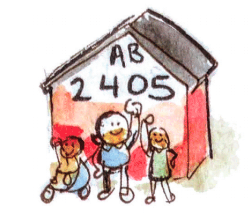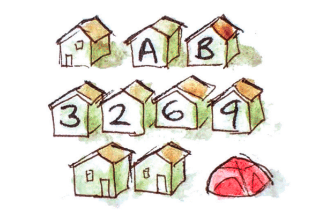Years ago, way back in June, Alfred Twu wrote a post on Medium summarizing housing bills in the California legislature that were still up for consideration.
In that short time, a lot has changed, including a tighter deadline for the legislature, which has struggled to figure out how to safely conduct hearings and vote on bills. Since they have until August 31 to decide on bills, which have to pass both the Senate and the Assembly, they are focusing on urgent bills.
Housing is an urgent need, with so many people out of work, and many households that were already barely making it moving closer to the risk of eviction. The bills address, generally, tenant protections, homelessness prevention and shelter, and encouraging more housing, sometimes by limiting restrictions local jurisdictions can apply.
Below is an update on some of the bills on Twu's list that are still in play, organized by topic. Most are in a committee in their second house, so they need to be passed by that house, and sent back to their first house to have amendments approved, before they can be passed on to the governor.
Tenant Protections and Rent Control
Three bills focus specifically on protecting tenants from the threat of eviction, by allowing them more time to pay rent or other bills if they were unable to pay during the state of emergency. A.B. 1436, the COVID-19 Tenant and Homeowner Relief Act, has a long list of co-authors, including Assemblymembers David Chiu (D-San Francisco), Rob Bonta (D-Oakland), Lorena Gonzalez (D-San Diego), Monique Limón (D-Santa Barbara), Miguel Santiago (D-Los Angeles), and Buffy Wicks (D-Berkeley). It would give tenants extra time to pay back rent they are unable to pay because of the emergency orders, during which they could not be evicted for nonpayment. It excludes commercial tenants from its protections, applying only to housing, and in the Senate was amended to include similar protections for mortgage holders.
Another bill creates a structure by which tenants and landlords sign an agreement on paying back rent. S.B. 1410, introduced by Senators Anna Caballero (D-Salinas) and Steven Bradford (D-Gardena), prohibits evictions unless a landlord can provide a sworn statement that the tenant rejected such an agreement. Landlords can’t evict a tenant if the landlord doesn't agree to participate. This bill, like the others, requires tenants to be proactive in their defense against eviction proceedings. Its latest hearing was supposed to be this week in the Senate Judiciary committee, but it was postponed.
Senator Connie Leyva's bill, S.B. 915, extends tenant protections to people living in mobile homes, who sometimes rent the home and sometimes own it and rent the land. This bill would ban the eviction of mobile home owners or tenants who can't pay rent or utility bills during the COVID state of emergency and for 120 days after it ends. Its latest hearing was supposed to be in the Assembly Committee on Housing and Development on Tuesday, but it was postponed.
Other bills concerning people living in mobile homes include A.B. 2690, from Assemblymember Evan Low (D-San Jose), which would extend local rent control laws to mobile home parks built after 1990, and A.B. 2895 from Assemblymembers Sharon Quirk-Silva (D-Fullerton) and Chiu would extend rent caps defined under last year's A.B. 1482 to mobile homes. Another on, S.B. 999 from Senator Tom Umberg (D-Santa Ana), would pause an exemption from local rent control ordinances that long-term leases on mobile homes are currently allowed. It would apply to leases signed on or after February 13 of this year.
Homelessness and Affordable Housing
Since land and houses are treated as commodities and investments, the notion that people are involved, and that people need housing, sometimes gets lost. Assemblymembers Autumn Burke (D-Marina Del Rey), Chiu, and Gonzalez set out to remedy that with A.B. 2405, which would declare the policy of the state to be that every individual has the right to safe, decent, and affordable housing. It would require state agencies to consider this basic perspective when working on any aspect of homelessness prevention, emergency accommodations, and permanent housing. However, it would not take effect until 2026. This bill is based on similar policies in New York City and elsewhere that have reduced the number and percentage of people living unsheltered outside.
A.B. 3269 from Assemblymembers Chiu, Santiago, Richard Bloom (D-Santa Monica), Bonta, and Quirk-Silva, would require the state government to come up with a plan to reduce homelessness in California. Originally it set a reduction goal of ninety percent by 2028, but its current wording leaves the actual benchmark to a planning process including assessing statewide needs and gaps in filling those needs.
A bill that would allocate funds to build homeless shelters is still in play. A.B. 3300 would allocate $2 billion to reduce homelessness. Money would go to a continuum of care that includes shelters, transitional housing, and permanent supportive housing (apartments with services available in the same building).
S.B. 1138, from Senator Scott Wiener (D-San Francisco), would require cities to zone for and build shelters to help address the homelessness crisis, following certain criteria, and limiting the restrictions cities can place on opening new emergency shelters. Currently, cities and counties can exploit a loophole that lets them draft a noncompliant housing plan to avoid having to update their housing element every four years. One consequence of this is little planning for housing and shelters. S.B. 1138 would close this loophole, requiring cities and counties to submit legally compliant housing plans, to ensure that shelters are zoned for and actually get built quickly.
Policies to Encourage the Building of Housing
Several bills would make adjustments in zoning regulations to allow for more and denser housing by right. For example, Senator Wiener has a bill, S.B. 899, that would allow hospitals, colleges, and religious institutions to build affordable housing on their land by right, even if it’s not currently zoned for residential uses.
According to a recent study by the Terner Center for Housing Innovation at UC Berkeley, “approximately 38,800 acres of religious institutions’ land – equivalent to the size of the City of Stockton – could potentially support new housing development, including in some of the state’s highest-cost counties.”
A.B. 1851, from Assemblymember Wicks, would prevent cities from denying a housing development built on a church parking lot solely on the basis that it would reduce parking spaces; up to half of the parking may be dedicated to housing. It's known as the “YIGBY” (Yes in God’s Back Yard) bill.
Senate President Pro-Tem Toni Atkins introduced S.B. 1120 to allow duplexes to be built by right in single-family zones, with some exceptions. It would also make it easier to divide a lot in a single-family zone into two to develop both parcels, and includes some anti-displacement language.
A.B. 3040 aims to encourage cities to rezone single family parcels to allow duplexes, triplexes, and fourplexes by allowing these to count as "potential developments" towards meeting part of their Regional Housing Needs Allocation goal. RHNA assigns cities a certain number of needed housing units, and they are required to zone for that new housing every eight years.
Another bill from Senator Wiener, S.B. 902, would allow cities to rezone land to build up to ten homes per parcel if the parcel is located in a transit-rich area, a jobs-rich area, or an urban infill site, without having to go through the California Environmental Quality Act process, thus saving time and money.
Several bills still in play aim to legalize housing developments in commercial zones, imposing certain conditions including a minimum number of affordable units. For example, Assemblymembers Bloom and Phil Ting (D-San Francisco) introduced A.B. 3107, which would require cities to allow housing developments in commercially zoned areas if at least twenty percent of the units in a project were affordable to lower income households.
Senator Caballero authored S.B. 1385, which would allow housing development on "neighborhood lots," defined as parcels within an office or retail commercial zone. A minimum of twenty units per acre and other restrictions apply.
Senator Anthony Portantino's bill, S.B. 1299, would create grants for cities that rezone idle sites formerly used for a big box retailer or a commercial shopping center and instead allow the development of workforce housing.










